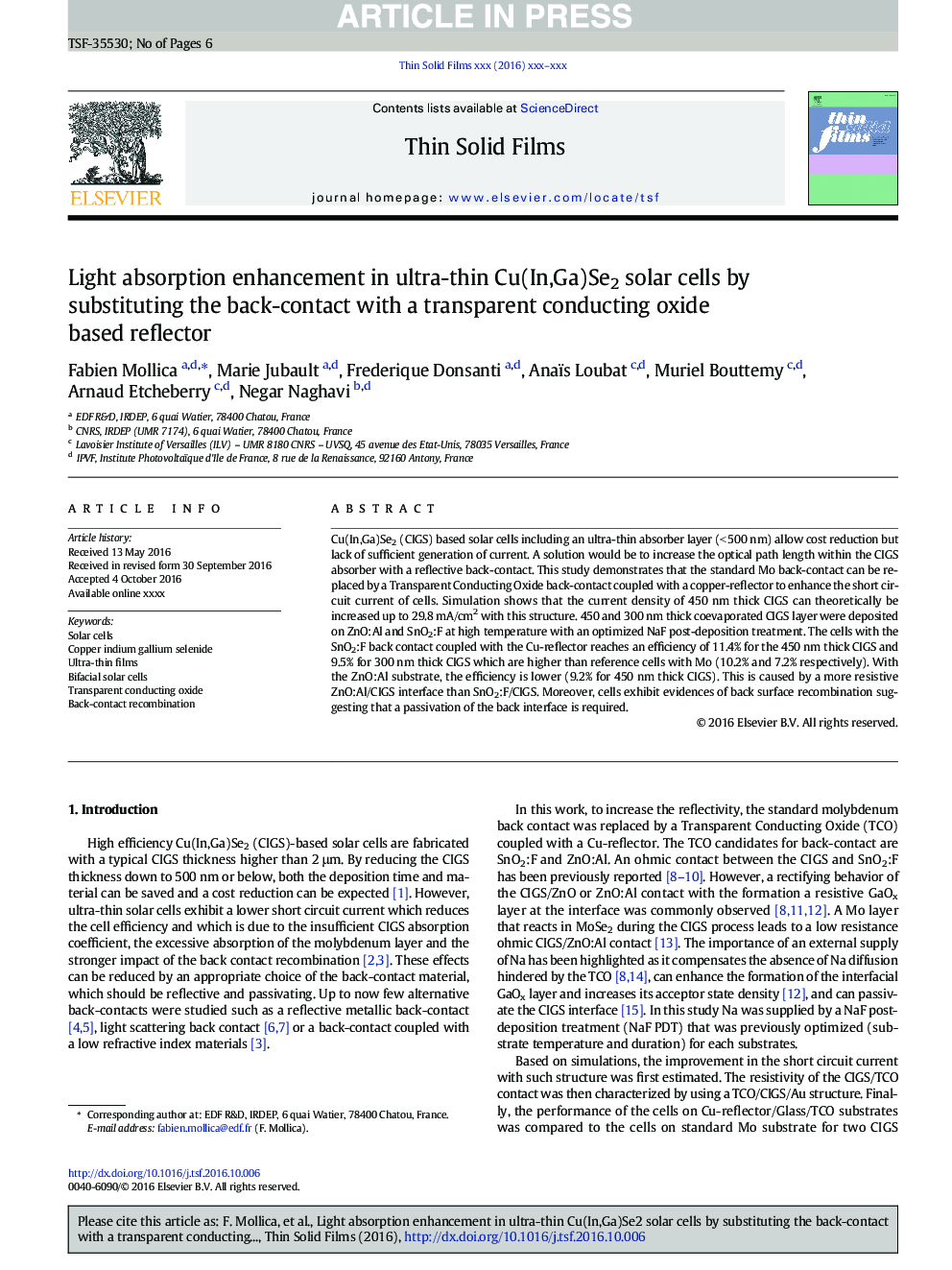| Article ID | Journal | Published Year | Pages | File Type |
|---|---|---|---|---|
| 5465946 | Thin Solid Films | 2017 | 6 Pages |
Abstract
Cu(In,Ga)Se2 (CIGS) based solar cells including an ultra-thin absorber layer (<Â 500Â nm) allow cost reduction but lack of sufficient generation of current. A solution would be to increase the optical path length within the CIGS absorber with a reflective back-contact. This study demonstrates that the standard Mo back-contact can be replaced by a Transparent Conducting Oxide back-contact coupled with a copper-reflector to enhance the short circuit current of cells. Simulation shows that the current density of 450Â nm thick CIGS can theoretically be increased up to 29.8Â mA/cm2 with this structure. 450 and 300Â nm thick coevaporated CIGS layer were deposited on ZnO:Al and SnO2:F at high temperature with an optimized NaF post-deposition treatment. The cells with the SnO2:F back contact coupled with the Cu-reflector reaches an efficiency of 11.4% for the 450Â nm thick CIGS and 9.5% for 300Â nm thick CIGS which are higher than reference cells with Mo (10.2% and 7.2% respectively). With the ZnO:Al substrate, the efficiency is lower (9.2% for 450Â nm thick CIGS). This is caused by a more resistive ZnO:Al/CIGS interface than SnO2:F/CIGS. Moreover, cells exhibit evidences of back surface recombination suggesting that a passivation of the back interface is required.
Keywords
Related Topics
Physical Sciences and Engineering
Materials Science
Nanotechnology
Authors
Fabien Mollica, Marie Jubault, Frederique Donsanti, Anaïs Loubat, Muriel Bouttemy, Arnaud Etcheberry, Negar Naghavi,
